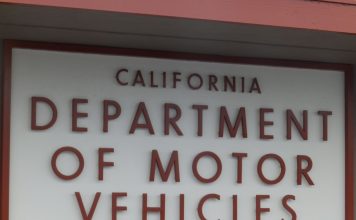For more than 30 years, the federal Clean Air Act allowed
California to adopt anti-smog regulations much tougher than any
national rules. Until now.
For more than 30 years, the federal Clean Air Act allowed California to adopt anti-smog regulations much tougher than any national rules. Until now.
For more than 30 years, automakers fought steadily to keep California from pioneering rules like the original requirement for primitive smog control devices in the early 1960s, the 1980s-era mandate for catalytic converters and a zero-emissions vehicle requirement now set to take effect in about seven years.
They always failed. Until now. Under the Clean Air Act, the fact that two California regions are among the world’s smoggiest – Southern California and the San Joaquin Valley – carried the day in every court. Until now.
But the days when California set the pace in air pollution rulemaking may be waning. For engine makers and the oil company lobby known as the Western States Petroleum Assn. in late April prevailed on the U.S. Supreme Court to throw out rules forcing private trash haulers, street sweepers, bus lines and trucking companies to buy low-pollution vehicles for their fleets when replacing existing stock.
These regulations from the South Coast Air Quality Management District, the regional anti-smog agency covering Los Angeles, Orange and much of Riverside and San Bernardino counties, did not demand anyone buy new trucks or buses immediately. They did not mandate new technology, forcing companies only to purchase models already available.
Not good enough for the Supreme Court, egged on by Bush administration lawyers who have consistently argued in favor of polluters of all kinds against advocates of clean air and water.
The justices’ 8-1 ruling might go down in the same kind of ignominy as former President Gerald Ford’s decision not to help bail New York City out of a mid-1970s financial crisis. “Ford to NY: Drop Dead!” headlined the New York Daily News back then. “Supreme Court to California: Breathe Poison!” would be an accurate headline for the new decision.
Almost all of California is directly affected, too, as the clean-vehicle rule was certain to be adopted by every other smog control district in the state if it had stood up in court.
That makes “breathe poison” a valid translation of the meaning of the Supreme Court order.
The new rules had already caused 60 percent of the affected region’s buses to run on clean alternative fuels like compressed natural gas. That helped cut severe smog days last year in Southern California about 50 percent from 2001.
Things promised to get even cleaner down the line, too. The rule was expected to eliminate 2,699 tons of carbon monoxide per year by 2010, along with 1,931 tons of nitrogen oxides. The two chemicals are key elements of smog that help cause heart disease, emphesema and other lung problems. Further thousands of tons of particulates were also to be eliminated. These are tiny pieces of diesel soot which often lodge in the lungs and have been documented among the causes of lung cancer.
The precedent set in this ruling is even more pernicious than the immediate impact of forcing more poison into the lungs of Californians.
For it is well-established law that while states cannot grant their citizens fewer rights than those guaranteed by the Constitution, they can allow more rights.
By overruling the Southern California anti-smog rules, the court was essentially saying that breathing clean air is not a fundamental right that states can assure unless the federal government says it is. The justices were also saying the Constitution’s interstate commerce clause guaranteeing free trade within the nation trumps any need to breathe healthy air.
Wrote Justice Antonin Scalia for the court, “The manufacturer’s right to sell federally approved vehicles is meaningless in the absence of a purchaser’s right to buy them. If one state or political subdivision may enact such rules, then so may any other; and the result would undo Congress’ carefully calibrated regulatory scheme.”
Scheme, of course, is a good word for the air pollution rules adopted by Congress and the federal Environmental Protection Agency. While California regulators – moved by the thick smog in many urban areas – have fought off the blandishments and protests of automakers, federal authorities usually do whatever these companies want. That’s why California has had to set the pace.
Now the precedent of this decision threatens even the principle that allows California to regulate conventional cars more strictly than other states. Which means the majority of the Supreme Court simply doesn’t care if we breathe unhealthy air so long as the automakers, the oil companies and the engine makers clear healthy profits.
Elias is author of the current book “The Burzynski Breakthrough: The Most Promising Cancer Treatment and the Government’s Campaign to Squelch It,” now available in an updated third edition. His email address is td*****@*ol.com














